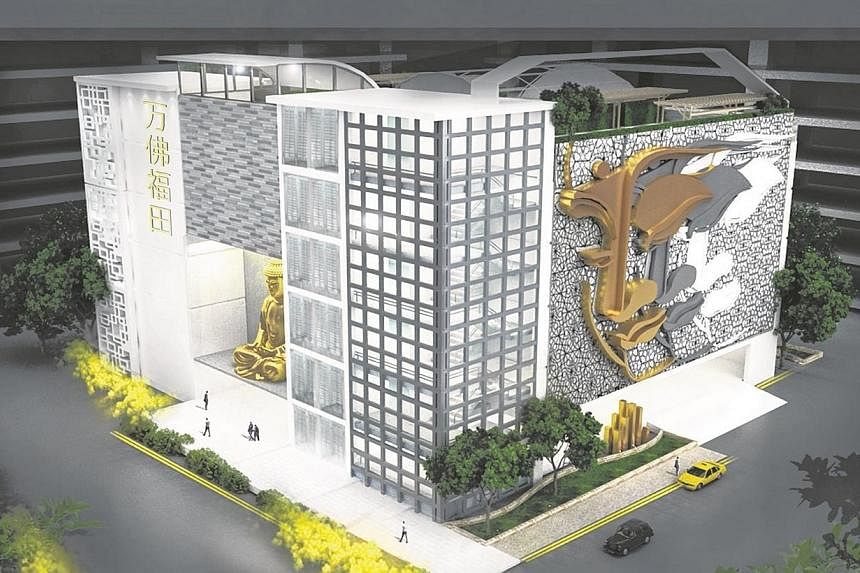SINGAPORE - The company which is developing the Sengkang temple with columbarium space must adhere strictly to guidelines which apply to sites set aside for places of worship, the authorities said in a statement on Tuesday.
It must preserve "the intent of the site as a Chinese temple", said the Housing Board (HDB) and Urban Redevelopment Authority (URA), reiterating that only up to 20 per cent of the total gross floor area can be set aside for ancillary columbarium use.
Eternal Pure Land, a private company developing the site, has also affirmed to the HDB its commitment to run "a Chinese temple to serve the community", the statement added.
Eternal Pure Land is owned by Life Corp, which is listed on the Australian stock exchange. Life Corp is the parent company of Singapore Funeral Services.
Some would-be residents of Fernvale Lea, where the temple will be located, have questioned why the facility is being developed by a commercial organisation, instead of a religious group or non-profit organisation. These residents are upset that the temple will be built close to their Build-To-Order flats, and some have even asked for a refund.
In the joint statement, the authorities said steps will be taken to ensure that the proposed temple integrates well with the surrounding developments.
There are guidelines in place to make sure that these facilities blend in well. For example, columbarium space in places of worship or clan associations must be located inside the main building, out of sight from the surrounding developments, preferably in the basement. If it has to be located above ground, it should be screened from public view. This policy has been in place since 1999, the statement said.
The HDB and URA listed examples of other residential estates where places of worship have columbarium facilities, including Fo Guang Shan Chinese Temple along Punggol Walk, Seu Teck Sean Tong Temple at Toa Payoh Lorong 6, and the Church of the St. Mary of the Angels at Bukit Batok East Ave 6.
The statement said: "Places of worship can be successfully integrated into the design of residential estates to serve the needs of our people."

